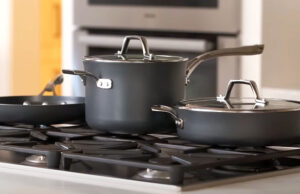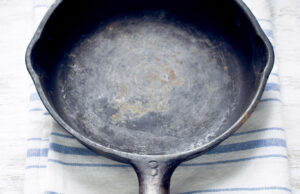Ovens are essential in every kitchen, whether you’re baking a cake or roasting your favorite dish. But before you begin, you need to preheat the oven to ensure everything cooks evenly and perfectly. But how do you do it? Don’t worry—this guide will walk you through everything you need to know to preheat your oven like a professional. Let’s dive in!
Understanding the Importance of Preheating Your Oven
Preheating your oven might seem like a small step, but it’s an essential part of cooking and baking that should never be skipped. Why? Because cooking or baking without preheating can lead to uneven results. Imagine putting your cake batter in a cold oven and expecting it to rise properly—well, it won’t. The same goes for roasting meat or vegetables. Preheating ensures that your food cooks at the right temperature from the start.
When you turn on your oven, the heating elements inside need time to reach the correct temperature. Preheating is this process of warming the oven to the desired temperature before you start cooking. This allows for even heat distribution, ensuring that your food cooks properly, as intended.
Preheating is important for a few reasons:
- Even cooking: When the oven reaches the desired temperature, your food will cook more evenly.
- Better results: Whether you’re baking or roasting, preheating helps your dishes rise and cook as they should.
- Faster cooking: If your oven is already hot, your food will cook faster than if you were starting from a cold oven.
Not preheating your oven can result in food that is undercooked, overcooked, or improperly cooked. It’s a simple step, but one that makes a huge difference. Now, let’s get into the nuts and bolts of how to preheat your oven properly.
Step-by-Step Guide to Preheating Your Oven
Before you dive into cooking, it’s crucial to understand exactly how to preheat your oven. It’s a simple task, but there are still some key things to remember. Let’s break down the process in easy-to-understand steps.
1. Set the Temperature
The first thing you’ll want to do is determine the temperature needed for your recipe. Whether you’re baking a cake, roasting a chicken, or heating frozen pizza, most recipes will tell you the exact temperature required. Most commonly, ovens are preheated to temperatures between 325°F (163°C) and 450°F (232°C).
Once you know the desired temperature, turn your oven’s temperature dial or use the buttons on your oven’s digital display to set it. Don’t forget to check if the recipe calls for Fahrenheit or Celsius, especially if you’re following instructions from a different country.
Tip: If you’re unsure of the oven temperature, start at 350°F (175°C). This is a common temperature for many recipes.
2. Wait for the Oven to Heat Up
After setting the temperature, it’s time to wait for the oven to preheat. Most ovens have an indicator light that shows when the oven has reached the desired temperature. You can also hear a sound, like a beep or click, once the oven is preheated.
This step usually takes around 10 to 15 minutes, depending on your oven and the temperature you’re preheating to. Higher temperatures may take a little longer to reach, while lower ones will heat up faster.
Tip: Don’t open the oven door during preheating, as it lets heat escape and could slow down the process.
3. Confirm the Temperature
Some ovens have a built-in feature that signals when the oven is fully preheated. However, many ovens might not show the exact temperature, and sometimes, the built-in thermometer can be inaccurate. This is where an oven thermometer can come in handy. By placing an oven thermometer inside, you can check if your oven is truly reaching the desired temperature.
Tip: Use an oven thermometer to get an accurate reading, especially if your oven is older. This ensures that your food is cooking at the correct temperature.
4. Use the Right Rack Position
Once the oven has reached the right temperature, the next step is to choose the right rack position. Depending on what you’re cooking, you’ll want to adjust the oven rack to ensure the best cooking results. For instance, baking cakes or cookies is best done on the middle rack, while roasting vegetables may require a lower rack.
- Middle rack: Ideal for even heat circulation, great for baking and roasting.
- Top rack: Suitable for broiling or to get a more crispy top.
- Bottom rack: Good for roasting large cuts of meat or getting a crispy crust on baked goods.
Tip: Always check your recipe for specific guidance on rack placement. Some recipes work best with the rack at a particular level.
5. Don’t Overcrowd the Oven
Once your oven is preheated and ready to go, avoid overcrowding it with too many dishes. Allow space between each item to ensure air can circulate freely. This will promote even cooking and prevent uneven results. Overcrowding may result in longer cooking times, and your food may not cook properly.
Tip: Use baking sheets or pans that fit comfortably inside your oven, leaving some room for air to circulate around your food.
6. Start Cooking or Baking
Once your oven is preheated, the next step is to load in your food! With the oven at the perfect temperature, your food will now cook as intended. Whether you’re placing a pizza in the oven or baking your favorite cookies, the preheating process ensures that everything cooks properly from the start.
Tip: Keep in mind that some ovens lose heat when the door is opened, so try to keep the door closed as much as possible while cooking.
Common Mistakes to Avoid When Preheating Your Oven
Now that you know the steps to preheating your oven, it’s important to avoid some common mistakes. These mistakes are easy to make but can lead to less-than-perfect results. Here are some things to keep in mind:
- Not preheating long enough: If you don’t allow the oven to fully preheat, your food may not cook correctly. Even if the oven’s light turns on, it might not be up to the set temperature yet.
- Opening the oven door too much: Each time you open the door, the heat escapes, and it takes the oven longer to recover. Try to keep the door shut during preheating and throughout cooking.
- Not checking oven accuracy: If your oven isn’t heating to the correct temperature, your food might not cook properly. Use an oven thermometer to ensure accuracy.
- Using the wrong rack position: Always place your food on the correct rack for the best results. For example, baking should generally be done on the middle rack to promote even cooking.
Extra Tips for Efficient Oven Use
- Avoid putting cold food in a preheated oven: Cold dishes like frozen lasagna or raw dough will drop the oven temperature, causing the food to cook unevenly. Allow frozen food to thaw a bit before cooking.
- Use the convection setting (if available): If your oven has a convection setting, use it for more even cooking. The fan circulates hot air, which can speed up cooking times and improve the final result.
- Preheat with the oven door closed: Keeping the oven door closed is essential during preheating to avoid losing heat and to get the oven to reach the desired temperature quicker.
By now, you should feel confident about preheating your oven. It’s a small but crucial step in ensuring your food turns out delicious every time. Happy cooking!
Frequently Asked Questions
Is it necessary to preheat an oven every time?
Yes, preheating ensures your food cooks evenly and at the right temperature from the start. Skipping it can result in uneven cooking or baking.
Can I skip preheating the oven for certain foods?
For some foods, like casseroles or roasts, you can put them in a cold oven, but for most baked goods like cakes and cookies, preheating is important.
Do I need to wait until the oven reaches full temperature?
Yes, for best results, it’s essential to wait until the oven reaches the desired temperature. You can use an oven thermometer to double-check accuracy.
Is it okay to open the oven door during preheating?
It’s best to avoid opening the door too much during preheating, as it lets heat escape and slows down the process.
Can my oven be too hot during preheating?
Most modern ovens are designed to reach and maintain the correct temperature. However, if your oven’s thermostat is faulty, it could overheat. Using an oven thermometer can help you monitor the temperature.
Do I have to preheat my oven before every baking session?
Yes, it’s generally recommended to preheat your oven before every baking session. This ensures your baked goods rise properly and cook at the right temperature.
Can I use my oven’s convection setting when preheating?
Yes, you can use the convection setting during preheating for more even heat circulation. Just make sure to adjust the temperature as needed for the convection mode.
Do I need to adjust my cooking time if I’m preheating with a convection oven?
Yes, if using a convection oven, you may need to reduce your cooking temperature by 25°F (about 14°C) and monitor the cooking time closely.



